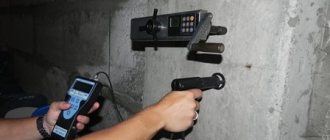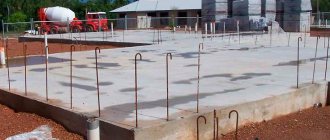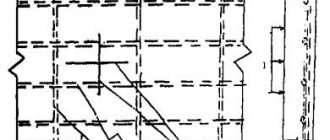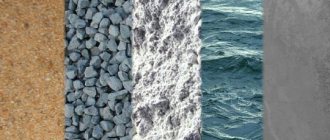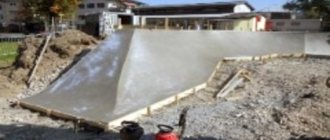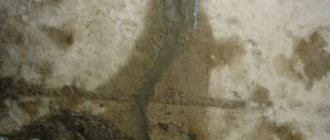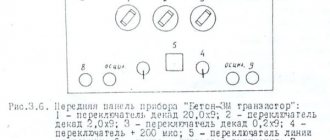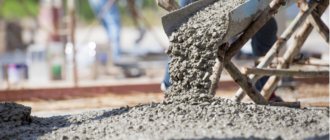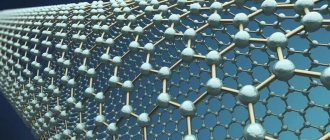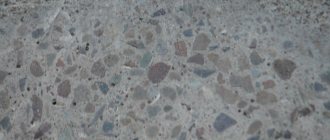- home
- Concrete testing
Laboratory tests of concrete are carried out on the basis of GOST 22690-2015, GOST 10180, GOST 18105, GOST 7473, GOST 10181.
"UralstroyTest" - Concrete testing
Contact us
Laboratory testing of concrete allows us to determine:
- Frost resistance.
- Waterproof.
- Shock-pulse and ultrasonic properties. Strength characteristics.
I would like to note that the quality of reinforced concrete structures depends on the timeliness of the tests.
Our laboratory will undertake the responsibility of taking samples (drilling cores), and will also provide a detailed report on the results of the test.
Testing of concrete using non-destructive methods, GOST 22690
| Object, type of test | Cost without VAT |
| Driving sample cubes: — in Test - at the CUSTOMER's site. | 1000 rub. per episode 3500 rub. in an hour |
| Driving cylinder samples, prism samples: — in Test - at the CUSTOMER's site. | 1500 rub. per episode 3500 rub. in an hour |
| Density of concrete according to GOST 12730.1. | 1000 rub. |
| Water absorption. | 2600 rub. |
| Compressive strength of concrete at intermediate or design age GOST 10180. | 800 – 1200 rub. depending on the number of episodes |
| Tensile strength in bending, GOST 10180. | 2000 – 2800 rub. depending on the number of episodes |
| Frost resistance using the basic method, GOST 10060. | 300 rub. per cycle |
| Frost resistance by the accelerated method in salt (at t = -18°C), GOST 10060. | 500 rub. per cycle |
| Frost resistance by the accelerated method in salt (at t = -50°C) - all types of concrete, except for road and airfield pavement concrete, concrete structures operating in mineralized water, GOST 10060. | 1700 rub. per cycle |
| Frost resistance by the accelerated method in salt (at t = -50°C) - concrete for road and airfield pavements and concrete for structures operating in mineralized water, GOST 10060. | 1100 rub. per cycle |
| Frost resistance using the “Concrete – Frost” device. | 12000 rub. |
| Determination of water resistance GOST 12730.5 “wet spot” method: - W6; - each next step. | 9000 rub. 1600 rub. |
Concrete testing with core sampling
| Object, type of test | Cost without VAT |
| Core selection at the CUSTOMER's site: — in positive temperatures (above 5ºС) — in conditions of negative temperatures (from 5ºС to -10 ºС) | 3000 rub. in an hour 3500 rub. in an hour |
| Preparation (cutting) of cores for testing: — diameter (height) up to 80 mm — diameter (height) over 80 mm | 1500 rub. per episode 3000 rub. per episode |
| Preparation of the sample surface for testing | 1500 rub. per episode |
| Compressive strength of concrete, GOST 28570 | 1500 rub. |
Notes:
- VAT is not provided due to the CONTRACTOR's use of a simplified taxation system.
- The cost is given for one unit of account (batch, series, fraction, design, etc.).
- The visit of an IT specialist to the CUSTOMER’s site is paid separately according to the invoice issued by the CONTRACTOR. The cost of a visit by an IT specialist to the CUSTOMER’s site, taking into account the tests carried out, is at least 5,000 (five thousand) rubles.
- The cost of a duplicate of a previously issued test report is 250 (two hundred fifty) rubles. for 1 copy and is paid separately according to the invoice issued by the CONTRACTOR.
- At temperatures below - 10 ºС, core sampling is not carried out.
- When carrying out tests to determine the class of concrete in reinforced concrete structures using the peeling method on the lower parts of floor slabs, an increasing factor of 2 is applied.
Goals and objectives
Testing of concrete samples is carried out by specialized laboratories, which select control material and test it for strength, tensile strength and quality. These indicators are extremely important since concrete is used in the vast majority of construction projects. Detection of defects in the early stages of construction will save the customer from many troubles associated with the need to make changes to the work already done. Carrying out the tests will allow us to solve the following problems:
- Checking the quality of the material for its compliance with the design documentation during construction work. The customer independently sets the deadlines for completing the work. In some cases the test may need to be carried out several times during construction. The final inspection is carried out by regulatory authorities upon delivery of the project.
- Expert groups suspect the presence of defects in reinforced concrete structures. In most cases, work is suspended until results are obtained, so the customer is interested in carrying out urgent tests. If a defect is detected, you have to look for ways to eliminate the problem or completely replace the used low-quality blocks.
Tests are mandatory before starting work on raising the floor in basements or technical rooms. It is especially important to conduct such studies in old buildings.
Laboratory experiments must be ordered urgently when water penetrates into technical or basement areas. A leak can lead to gradual destruction of the entire building, so the cause must be established at an early stage.
One of the most serious problems is the appearance of cracks or other damage in a monolithic structure. In most cases, this indicates an excessive service life of the building or a defect in the design. After the results of the research are announced, a special commission makes a decision on the future fate of the structure.
Very often, the initiator of checking the quality of a concrete structure is the buyer of any construction project. The client wants to be sure of the technical condition of the building.
The passport of each object details the materials used, service life and other important technical parameters. When the planned overhaul comes due, a special commission carefully studies the condition of the materials. Similar actions are carried out during reconstruction or redevelopment.
The sequence of actions and sampling are carried out depending on the goals and objectives. The methodology developed within the certified laboratory also has an impact. In most cases, the process is a universal sequence of actions.
Why do we conduct tests?
Compression testing of concrete is carried out to solve the following problems:
- Prediction of properties of a monolithic product or structure.
- Determining the optimal composition and adjusting the concrete mixture.
- Quality control of the work of companies engaged in monolithic construction.
- Inspection of objects before redevelopment or major repairs.
- Assessing the condition of load-bearing structures before buying or selling a structure.
Testing concrete for strength in the StroyLaboratoriya SL laboratory will make it possible to timely identify possible violations of the technology during mixing and laying the mixture, prevent the appearance of defects in monolithic structures, and determine the suitability of the object for further operation. We invite concrete plants, companies involved in design and construction, as well as private customers to cooperate.
We work with all types of heavy, light, porous and decorative concrete using cement, lime polymer and other binders. We determine their strength characteristics and compare them with GOST or customer specifications.
Preparation of material for testing
One of the most informative and widespread research methods is the destructive method. To carry out the inspection, it is necessary to remove certain parts of the finished structure or take samples of the building mixture before it is poured into the formwork. From the selected materials, special cubic or cylindrical blanks are made , which will be subjected to laboratory tests.
Cubic shape
To obtain accurate data during research, there are certain requirements and rules for sample preparation. Creating a cube-shaped workpiece requires compliance with the following standards:
- Elements must fit certain dimensions. The edge of the cube should be 100, 150, 200 or 300 mm.
- It is important to take a sample from the middle part of the solution. If a concrete pump is used in the production process, the selection is carried out in three stages at intervals of 10 minutes. At this time, the mixture is thoroughly mixed.
- Pouring concrete into molds must be done no later than 20 minutes after taking samples.
- Samples are produced and tested in batches. The number of blanks is adjusted depending on the brand and purpose of concrete. In most cases, 3-4 pieces are sufficient for laboratory testing. During research, the technical characteristics of the mixture at different periods of crystallization can be established. Since density is one of the most important indicators, the permissible deviation of the average value should not exceed 50 kg/m3.
Destructive tests should be carried out no earlier than 28 days from the moment the mixture hardens. The results are assessed in accordance with GOST.
Cylindrical sample
Cylindrical samples are removed from finished structures for instrumental and visual analysis of the material. The sequence of actions when making cores is as follows:
- Taking samples from the structure requires the use of special diamond drilling equipment. The main difficulty is obtaining a workpiece without reinforcement.
- Preliminary preparation for the examination. The core prepared at the previous stage must be cut into several small cylindrical elements. For trimming, specialized equipment is usually used. If it is absent, the work can be done manually. The resulting samples must be kept for 6 days, after which laboratory tests are carried out on them.
- Conducting research that allows us to determine the compressive strength of concrete cores. Laboratory staff must first exclude the presence of cracks, holes or chips on the workpiece. Defective samples must be eliminated. Solid parts are subjected to stress under pressure. The results are recorded and compared with the documentation requirements.
Employees of certified laboratories will always tell you which method of research should be chosen. Based on the results of the inspection, all necessary documentation is drawn up, which confirms the possibility of further use of concrete or establishes the reasons for the defect. In addition, laboratory staff can give recommendations regarding the areas of application of a particular brand of material.
Methods for determining the strength of concrete
There are two ways to determine strength: destructive and non-destructive.
Ultrasonic determination of concrete strength
One of the most effective methods for checking the strength and defects of concrete is ultrasonic testing. In addition to strength, this method can determine the presence of voids and other defects.
There are two main methods for ultrasonic testing of concrete:
- Through method, when transmission occurs through the entire thickness of the structure. When carrying out this method, sensors for measuring the speed of ultrasonic waves are located on opposite sides;
- surface method, when ultrasonic velocity measurement sensors are located on one side.
Determining the waterproofness of concrete
Water resistance is one of the main characteristics. Waterproofness determines whether additional waterproofing measures, a plasticizer are required, and whether concrete is suitable at all. The parameter value is determined in a laboratory in accordance with the requirements of GOST 12730.5-84.
Types of waterproof tests:
- On a wet spot.
- Filtration coefficient.
- Filtratometry in a short time.
- Air permeability calculation is accelerated.
Wet spot
When carrying out this test, at least six samples are examined, with a preliminary determination of the moisture content of the concrete. Water pressure is applied to samples in a special form, the internal diameter of which is 150 mm, with open ends, in increments of 0.2 MPa. The water must be deaerated for at least an hour. If water seeps through the top end as a wet spot or drop, the test is completed.
The samples have different heights: 30, 50,100, 150 mm. The holding time for each sample is also different: 4, 6, 12, 16 hours.
Determination of filtration coefficient
The essence of this method is to determine the volume of filtrate passing through the sample at a given pressure. This method is carried out in a special installation, where all samples are kept under special conditions before starting. Drilled samples can also be used.
The holding pressure is increased stepwise every hour. The water that has passed through the sample is collected and weighed. Moisture that does not appear as droplets is absorbed by a sorbent such as silica gel. This method is quite time-consuming and labor-intensive.
Filtratometry
This method is considered accelerated and is carried out using a hand-held filter meter. At least six samples are examined by measuring the rate of pressure drop created by a 10 MPa pump. Based on the results of all tests, the average value is calculated. If the pressure drops quickly and it is possible to maintain it, then the coefficient is taken to be greater than 10-8 cm/s, which corresponds to grade B2 or less.
Determination of air permeability
This method is carried out using the Agama-2R device in accordance with the instructions.
Influencing factors on water resistance
Water resistance can be adjusted through the use of special binders that reduce the porosity of concrete, as well as the use of chemical additives. Modern additives, additives, and sealants can reduce porosity and give the material the necessary hydrophobicity.
Water resistance can be increased by using horizontal and/or vertical waterproofing. But penetrating insulation remains the most effective today.
Determination of concrete mobility
The mobility of the concrete mixture is one of the main factors influencing the formation of the material in the formwork.
The main technological parameter of a concrete mixture is workability - this is the ability of the solution to fill the formwork and take its shape.
Determination of the mobility of a concrete mixture is carried out both on the construction site and in the laboratory.
Determining elasticity with a cone is the simplest and most common measurement method.
Determination of concrete compressive strength
Currently, the classification of concrete (grade of concrete) helps to design concrete and reinforced concrete structures with optimal characteristics.
When using average strength indicators, there is a risk that the actual characteristics of concrete will be lower than the calculated ones. When average indicators are used as the smallest, then it is necessary to increase the size of the concrete structure, and this is a step towards higher costs.
Methods for determining strength
There are two ways to determine the strength of concrete and in both cases it is necessary to use certified equipment. There are two ways to determine strength - destructive and non-destructive.
Destructive way
When carrying out this test, samples are used that are cleaned of contamination and have absolutely smooth edges. They are placed in turn under a press and subjected to load, while the indicators at which the samples begin to collapse are recorded in the protocol. Based on the test results, the actual value is determined and compared with the design and standard value.
The destructive method is necessarily used in factories involved in the production of reinforced concrete products and on construction sites.
Laboratory research using a destructive method is considered the most reliable, and the obtained values are taken into account by architects and designers.
Strength testing methods
Today, concrete is used in various fields of construction, so a large number of different materials with excellent technical parameters are being introduced. Testing in laboratory conditions is carried out according to the following parameters:
- Compression and stretching. Special presses are required for testing. Laboratory staff set parameters and regulate the applied force depending on the technical characteristics of the concrete. The parameters are influenced by the brand of cement, the method of manufacturing the composition and mixture, the age of the material, and the crystallization mode.
- Mobility and density are key parameters in construction. To calculate them when testing concrete in the laboratory, a special Abrams cone is used. The product is a stainless steel device with several supports and handles for ease of testing. The dimensions of the cone can be different and depend on the goals and objectives. The testing process itself is quite simple. Concrete must be poured into the Abrams cone in 3 layers. Each level should not exceed 100 mm in thickness. All layers must be pierced with a metal rod, after which it is important to properly remove excess solution and compress the mold. Once the iron shell has been removed, the level of slack and density of the concrete can be assessed.
- Frost resistance and water permeability. In most cases, concrete structures are used in different weather conditions, so resistance to temperature and humidity changes is very important. You can check the sample's resistance to moisture using a special bath. The material is located in it, and water enters under different pressures. After the procedure, the weight of the liquid is measured and the water resistance coefficient is calculated. To calculate frost resistance parameters, it is necessary to use a special climate chamber. The workpiece is placed inside and subjected to alternate freezing and thawing.
- Workability test. This parameter is calculated in seconds and uses a special device called a viscometer. Time is measured from the moment the mixture begins to be laid until the final completion of the work. The quality of concrete depends on the speed of laying the mixture with a viscometer. The faster the work is completed, the higher quality the material is considered.
- Shrinkage testing using hydraulic presses.
Concrete strength tests are carried out by laboratories under different conditions. In this case, the customer needs to evaluate not only the final cost, but also many other parameters.
Concrete testing
We provide concrete testing services. All tests of materials are carried out in strict accordance with the current regulatory documents of the Russian Federation (GOST, SNiP, SP). When testing concrete, the following parameters are checked:
- Strength (based on samples and in structures);
- Density;
- Waterproof;
- Frost resistance (according to samples);
- Location of reinforcement in structures and thickness of the protective layer;
- Humidity.
| No. | Name of tests | Regulatory document | Price per one. tests in rub. |
| Testing of concrete (mortar). | |||
| 1 | Determination of the compressive strength of one sample (10x10x10 cm). | GOST 10180-2012 | 250 |
| 2 | Determination of the compressive strength of one mortar sample (7x7x7 cm). | GOST 5802-86 | 250 |
| 3 | Drilling, preparing and testing core samples from structures. | GOST 28570-90 | 3000 |
| 4 | Determination of concrete strength using samples taken from the structure (core). | GOST 28570-90 GOST 10180-90 | 500 |
| 5 | Determination of the strength of masonry mortar using samples taken from the structure. | GOST 5802-86 | 3000 |
| 6 | Determination of strength using a non-destructive method on a section of a structure (method: elastic rebound, ultrasonic testing). | GOST 22690-88 GOST 17624-2012 GOST 18105-2010 GOST 31914-2012 | 300 |
| 7 | Determination of the actual class in a separate structure (6 sections). | GOST 18105-2010 GOST 31914-2012 | 1000 |
| 8 | Determination of strength in a structure using the peeling method. | GOST 22690-88 | 1000 |
| 9 | Construction of a calibration relationship between strength and indirect characteristic (elastic rebound, ultrasonic testing). | GOST 22690-88 GOST 17624-2012 | 12000 |
| 10 | Determination of average density from samples. | GOST 12730.1-78 | 500 |
| 11 | Determination of surface moisture (screed). | GOST 12730.2-78 GOST 12730.0-78 GOST 21718-84 | 500 |
| 12 | Determination of water resistance in structures and products. | GOST 12730.0-78 GOST 12730.5-84 | 500 |
| 13 | Determination of water resistance in a series of samples (6 pcs.). | GOST 12730.0-78 GOST 12730.5-84 | 2500 |
| 14 | Determination of frost resistance in a series of samples (6-12-18 pcs.) | GOST 10060-2012 | 35000 |
| 15 | Determination of the thickness of the protective layer and the location of reinforcement in the structure and products. Uch. 2-3 m2. | GOST 22904-93 | 1000 |
| 16 | Determination of the adhesion strength of the mortar (screed, plaster) to the base. | GOST 28089-2012 GOST 28574-2014 | 2000 |
| 17 | Sampling of concrete mixture with production and storage of samples in a normal hardening chamber. | GOST 10180-2012 | 1200 |
The main standardized and controlled quality indicators during construction according to SNiP 52-01-2003 “Concrete and reinforced concrete structures” are:
- Compressive strength class B;
- Axial tensile strength class Bt;
- Frost resistance grade F;
- Waterproof grade W;
- Medium density grade D.
The following are brief descriptions of the main types of concrete tests carried out by our laboratory when checking the quality of the material:
Strength of concrete. The main requirement for reinforced concrete structures in modern construction is compliance with the strength specified in the project. The strength of concrete can be determined both in laboratory conditions (testing samples) and on the construction site (non-destructive testing methods):
- Strength test (compression test of concrete) (GOST 10180-2012). The essence of the method is to determine strength and consists in measuring the minimum forces that destroy control concrete samples under static loading. During concreting, concrete cube samples are made from the concrete used, or core-cylinder samples are drilled directly from the structures themselves (GOST 28570-90).
- Non-destructive testing methods (GOST 22690-88, 17624-2012). The strength of concrete is determined by a pre-established calibration relationship between the strength of concrete (determined on samples or by the tear-off method with chipping) and an indirect characteristic. An indirect characteristic, depending on the test method, is: the values of elastic rebound, shock impulse, separation with shearing, rib shearing, ultrasonic method. Non-destructive methods make it possible to determine the strength of a structure without damaging it and reducing its load-bearing capacity.
Workability of concrete mixture (101810-2000). This method characterizes the mobility and rigidity of a concrete mixture. The mobility of the BS is assessed by the sediment (SS) or spread (DR) of the cone formed from the test mixture. To carry out this test, a steel cone, a bayonet, a ruler and a stopwatch are used. Depending on the test results, the grade of concrete mixture is determined by mobility or rigidity.
Density of concrete mixture (10181-2000). The essence of the method lies in the ratio of the mass of the compacted concrete mixture to its volume. In this test, the concrete mixture is placed in a pre-weighed vessel and compacted based on workability. The average density is determined as the arithmetic mean of two determinations from one sample.
Testing concrete for frost resistance (GOST 10060.0-2012). The essence of the method is a comparative analysis of the strength of concrete samples between control samples and samples that have undergone a certain number of freezing and thawing cycles. This quality control method allows you to determine whether a given concrete corresponds to the required frost resistance class (F). Tests are carried out in laboratory conditions on a series of concrete samples using freezers (-20...-50 C) by alternating freezing and thawing of concrete. The method is divided into several types of tests: basic and accelerated. Depending on the method for determining frost resistance, the number and dimensions of samples should be taken according to Table 2 of GOST 10060.0-2012.
Waterproofness of concrete structures (GOST 12730.5-84) The main method is the accelerated method for determining the waterproofness of concrete by its air permeability. This method can be used both in laboratory conditions (on samples) and in structures using an “Agama-2P” type device. This type of test is especially significant for hydraulic structures (swimming pools, reservoirs) and shows which water resistance class (W) the concrete belongs to.
The main GOST standards used when testing concrete:
- GOST 10181-2014. CONCRETE MIXTURES. Laboratory methods for testing concrete
- GOST 10180-2012. CONCRETE. Methods for determining strength using control samples.
- GOST 12730.1-78. CONCRETE. Methods for determining density.
- GOST 12730.2-78. CONCRETE. Method for determining humidity.
- GOST 21718-84. Construction materials. Dielcometric method of measuring humidity.
- GOST 53231-2008. CONCRETE. Strength control.
- GOST 22690-88. CONCRETE. Determination of strength by mechanical methods of non-destructive testing.
- GOST 10060.0-2012. CONCRETE. METHODS FOR DETERMINING FROST RESISTANCE.
- GOST 12852.0-77. CELLULAR CONCRETE. General requirements for test methods.
- GOST 28570-90. CONCRETE. Methods for determining strength using samples taken from structures.
- GOST 17624-2012. CONCRETE. Ultrasonic method for determining strength.
- GOST 22904-93. REINFORCED CONCRETE STRUCTURES. MAGNETIC METHOD FOR DETERMINING THE THICKNESS OF CONCRETE PROTECTIVE LAYER AND LOCATION OF REINFORCEMENT.
- GOST 10180-2012. CONCRETE. Methods for determining strength using control samples.
- GOST 12852.6-77. CELLULAR CONCRETE. Method for determining sorption humidity.
Ultrasound testing of concrete Testing of concrete for tearing with chipping Testing of concrete using a non-destructive method Determination of the strength of concrete using the shock impulse method
Choosing a laboratory
The safety of many people depends on the quality of materials used in construction, so only certified organizations can conduct research. The customer should pay attention to some parameters:
- Efficiency. If testing must be completed in the shortest possible period of time, then it is worth choosing laboratories with a narrow focus.
- Quality and professionalism of employees. It is important to understand that not only the customers of the construction project, but also the contractors are interested in the results of the examination. If violations are detected at the final stages, the contractor will have to face large fines and the need to correct mistakes. That is why it is necessary to carefully read the certificates for the equipment used and find out the level of qualification of the personnel.
- Availability of updates to the scientific and technical regulatory framework. Specialists should carefully monitor the latest changes in the requirements for the technical parameters of the materials used.
In most cases, laboratory staff independently go to the site, collect samples, and talk about the necessary measures. The final cost depends on many parameters. First of all, the price is affected by the number of methods used. The specifics of the material and the number of grades of cement used to produce concrete have a significant impact.
